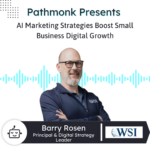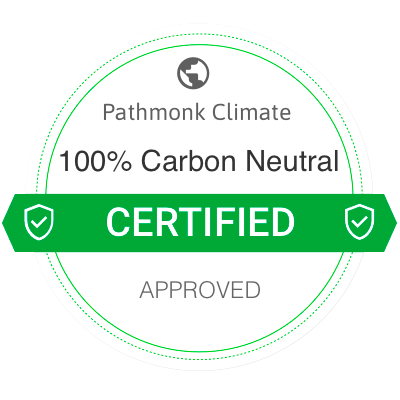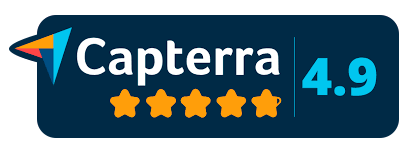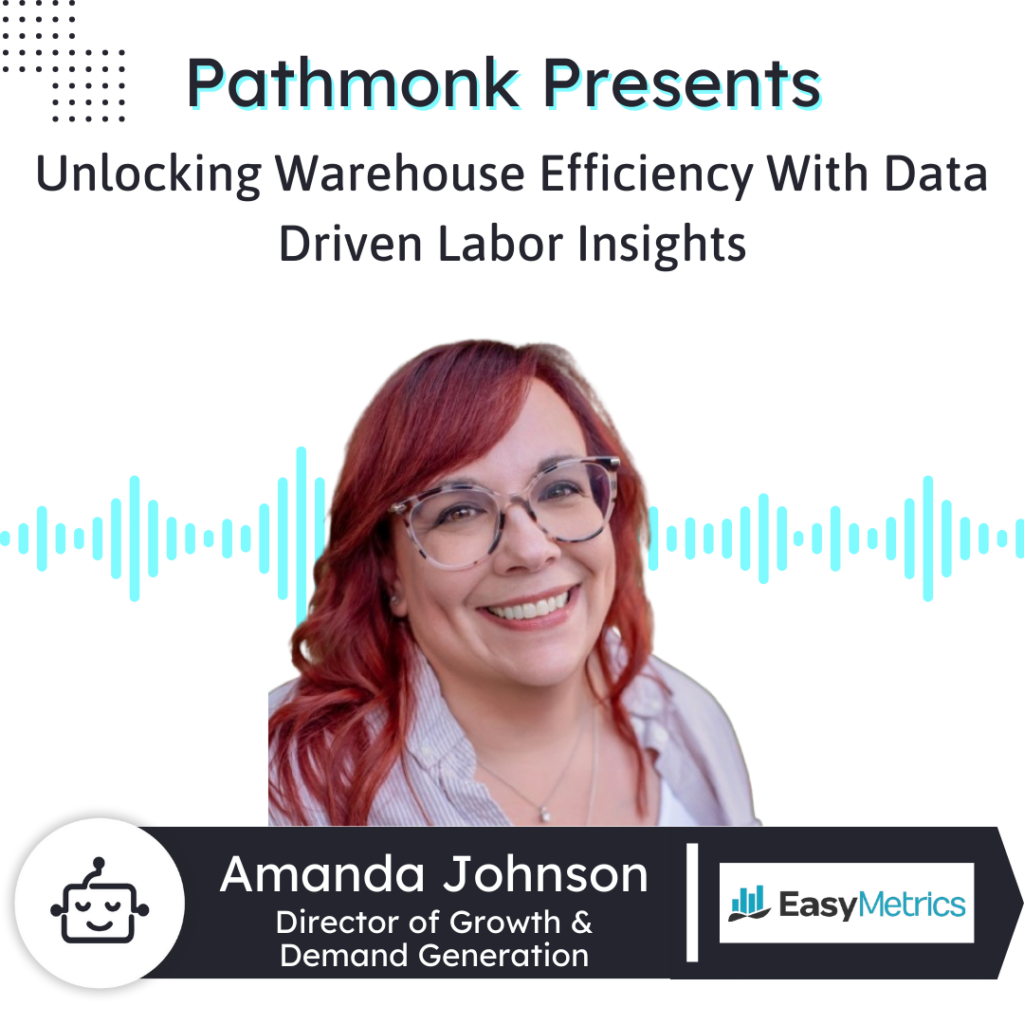
Introduction
In this episode of Pathmonk Presents, Amanda Johnson, Director of Lead Generation at Easy Metrics, breaks down how supply chain and warehouse teams can use data to improve labor performance and operational outcomes.
She explains how Easy Metrics helps organizations gain visibility into workflows, identify inefficiencies, and make smarter decisions that impact profitability.
Amanda also shares insights into her demand-generation approach, including ABM, content syndication, and optimizing the buyer journey through a more strategic website experience. Listeners will gain a sharp look into modern B2B marketing operations and the role data plays in driving both efficiency and revenue.
Increase +180%
leads
demos
sales
bookings
from your website with AI
Get more conversions from your existing website traffic delivering personalized experiences.
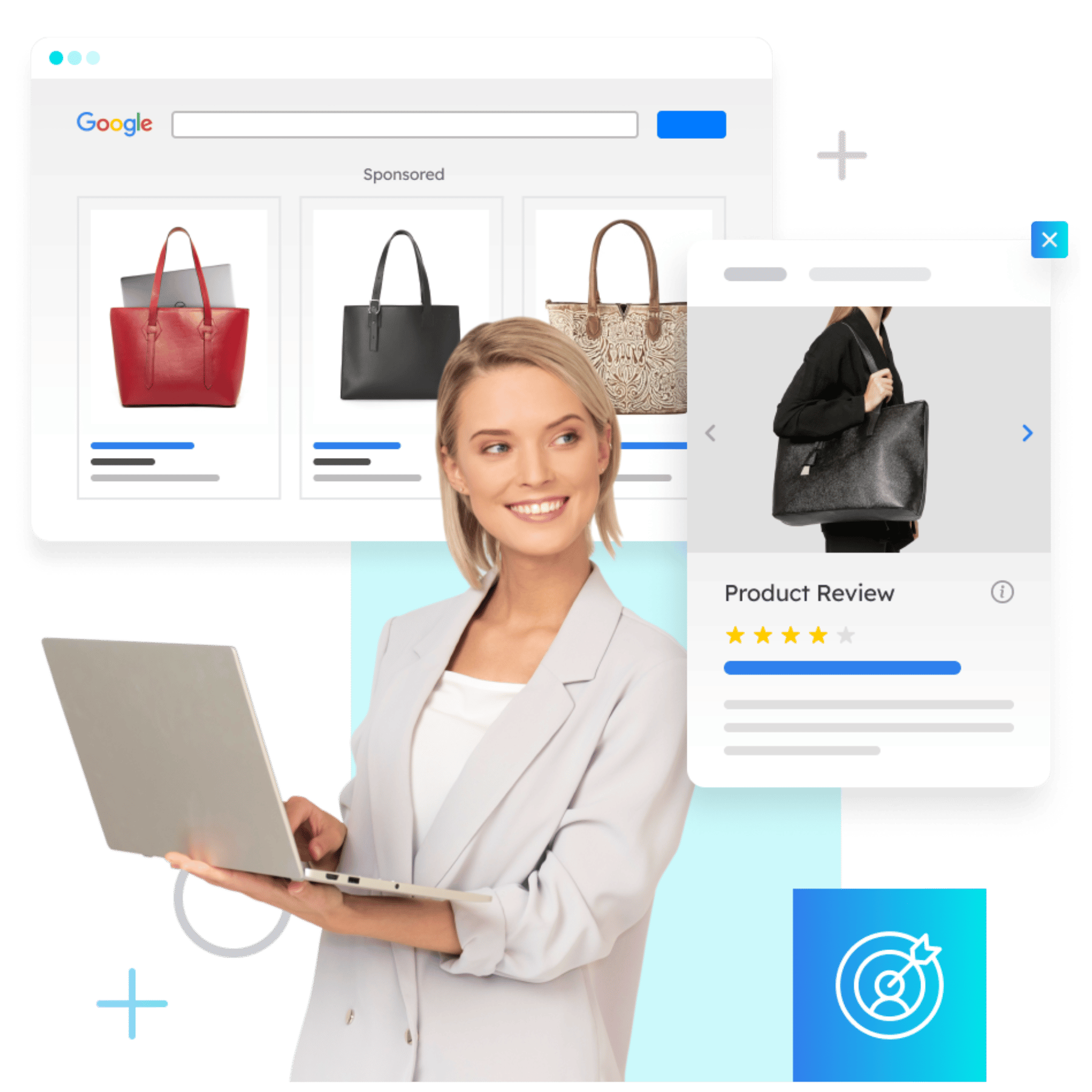
Kevin: Hey everybody. Welcome back to Pathmonk Presents. Pathmonk is the AI for website conversions. With increasing online competition, over 98% of website visitors don’t convert. The ability to successfully show your value proposition and support visitors in their buying journey separates you from the competition Online.
Pathmonk qualifies and converts leads on your website by figuring out where they are in the buying journey and influencing them in key decision moments with relevant micro experiences like case studies. Intro videos and much more. Stay relevant to your visitors and increase conversions by 50% by adding Pathmonk to your website in seconds.
Letting the artificial intelligence do all the work. An increased conversions by 50% while you keep doing marketing as usual. Check us out on Pathmonk.com. Hey everybody. Welcome back to another episode of Pathmonk Presents. we’re really looking forward to today’s episode because we’ve got Amanda Johnson, the director of Lead Generation over at Easy Metrics.
Amanda, how are you doing today?
Amanda Johnson: I’m really well, thanks. How are you?
Kevin: I’m doing great. Really looking forward to today’s conversation. So before we dive into anything, too deep into the weeds of everything and really getting to know ev everything about you and the business, why don’t you give us a little bit of a.
An overstatement about who Easy metrics is, what type of business you are, and who you’re helping out
Amanda Johnson: for sure. So Easy Metrics is a SaaS company that helps supply chain organizations really understand and improve their labor performance. So in warehouse warehouses and distribution centers, labor’s usually like the single biggest cost, but it’s also one of the hardest things to manage and measure.
So we take all of the complex data, from the operations systems and turn it into clear actionable insights so leaders can run their operations more efficiently and profitably.
Kevin: I think labor is one of those things that people think about as, how do I say? And just another aspect of, maybe let’s say some sort of manufacturing or some sort of really labor intensive job.
but it’s not as easy to manage as, let’s say, I don’t know. the supply chain or maybe, the costs or legal or something like that. Labor is always changing. It’s never gonna be the same. So to be able to have some sort of a tool that really makes that a much easier process, I can see it absolutely.
That working for anybody. And there’s a lot
Amanda Johnson: of variables, human variables, hu
Kevin: human variables that are not really involved with other areas of the business. Exactly. Exactly. okay, so maybe you can give us a little bit more insights about. Who is it that you guys are serving and what’s like the main problems that you’re serving for these types of businesses?
Amanda Johnson: So we primarily serve enterprise and mid-market companies, that have a lot of warehouses, multiple warehouses, or maybe one or two super ubic ones. so they’re typically in, in actual warehousing and distribution. And manufacturing. So basically anyone that has a warehouse that moves products, we help them become more efficient in how they move that product through the warehouse.
And we also do a lot of work with three pls, which is essentially that, kind of middleman that distributes all the products for everybody else. so again, labor is one of the biggest expenses of these companies, and so it’s really critical for them to optimize their labor costs. Optimize their processes and make smarter decisions based directly, on that data that can impact their profitability.
Where are they losing time? how can they do something more efficient if they have, someone that’s running around fulfilling orders? Is there a more efficient path to get from A to B2C? so those are the types of things that we really help them solve for, to make them more efficient.
Kevin: It to me as a novice in this area.
It sounds like there’s probably a lot of moving parts when we talk about Yes. Labor in, large, warehouses. in my mind I imagine a ton of people running around with different tasks. Yeah. Doing a bunch of different things. and how do you keep track of what everyone is doing? It sounds Making this easier, not just, what is a more efficient way of doing so and what is a more profitable way of doing so, but also easing what’s the, way that I wanna say it? ease of mind, kind of thing. Like it’s probably a really frustrating thing to always be following what’s everyone doing?
How are they doing it? Yeah. It sounds like that’s one of the pain points that you guys are solving.
Amanda Johnson: Absolutely. It’s that visibility into who’s doing what when, especially when you have so many people doing so many different things. And it’s not only from that perspective of like from the top down, but also you know, a lot of people that are working on the floor doing those actual jobs.
I have little to no idea of am I doing a good job? How am I meeting my numbers? What does that even look like? Are these numbers fair? So it’s a two-way street. And that too is giving that visibility into what does good look like, what does better look like? And then having that visibility for everyone.
Kevin: That makes sense. yeah, and I feel like I’m gonna be learning a lot throughout this conversation. okay. So next question I wanna focus a little bit on your audience. this is ultimately, a podcast that focuses mostly on digital marketing and websites and things like that. How is your audience typically finding out about you at the current moment?
are there any top acquisition channels or anything like that?
Amanda Johnson: So we have, I think our top acquisition channels are typically digital, honestly. but there’s, I would say that it’s maybe like a 60 40 mix. because a lot of them are also more event based, like the large trade shows and supply chain symposiums and things like that.
So there’s that digital element that’s like content syndication and ads and a BM, that. Then we also reinforce that with those, trade shows and speaking engagements and webinars, to build credibility.
Kevin: Yeah. I know that the website is like your. Let’s say online face that anyone can go to and see.
Yeah. And even if they do see you in a trade show, they’re still gonna go check out your website to learn a little bit more. It’s never just, oh, I met you at a trade show. Let’s start doing business. They have to go to the website, learn a little bit more. And I think that kind of leads me into the next question.
What role does the website play in terms of client acquisition like are, in terms of how your website is today, are there any major strengths or weaknesses?
Amanda Johnson: Yeah, it’s actually a really timely question for us. we literally just kicked off a web website redesign project, this past week. So our website today is more of a validation slash demo request tool than it is like an actual true acquisition engine.
Our get a demo. the, CTA performs pretty well, but I, it’s people that are going to our website specifically with that in mind. so it really hasn’t kept pace with what our buyer journey looks like, which is a lot of education. So most of our content is gated. we’re just, we’re due for an update, right?
So right now we’re trying to focus on a better ux. layering in tools like AI, chatbots and, other AI tools. I literally was, talking to my manager about, path Month the other day, and she was like, oh, do we need more ai? And I was like, we have too much AI is actually my question. so we’re basically trying to reconstruct the buyer journey.
so right now our website is, the strength is, it exists.
Kevin: every website has a service. There’s a lot of
Amanda Johnson: opportunity. Yeah.
Kevin: Okay. I’ll be interested to hear more about, offline, about what you’ve done to the website recently. Yeah, for sure. But for now, I wanna move the conversation a little bit away from Easy Metrics and a little bit more towards Amanda as the lead gen director, and learn a little bit more about what your typical responsibilities look like.
So maybe you can tell our audience in terms of your role, director of lead generation. What does a day to day look like? Are there any typical tasks that you’re handling on a regular basis and how can you give us some visibility into that?
Amanda Johnson: Yeah, so obviously as demand driven, my ultimate responsibility is writing revenue.
so this year one of my biggest achievements so far has been standing up demand base. and that is our true, like a BM motion where we talked a lot about a BM. We’ve done a lot of, target audience research and now we have a tool to actually do that. So we’ve been building, what do our engagement metrics look like?
Who are we targeting with, what ads, what does follow up look like? All of that good stuff. and outside of that, one of our other main. Areas that we acquire leads from its content syndication. So ensuring that we have that content funnel going consistently with our media partners, choosing the right media partners, that’s been a huge part of my responsibilities is balancing that.
Ratio of, inbound relatively top of funnel leads from content syndication and then putting them through filters and identifying our ICP through those, those leads, and then getting them into an A BM program to help move them through the funnel.
Kevin: Ooh. it’s a full pipeline. It is a complicated process.
Yes. yeah. One step at a time, though that e that top of funnel stuff is so important. Sure. You at least have a little, the, yes. Appropriate amount of volume at the top, but once you’ve actually got them in there, making sure that you’re doing the right thing with each and every lead.
Amanda Johnson: Absolutely. Absolutely. And it’s constantly constant iteration, oh, we thought this was gonna work great. Oh, that didn’t work so well. What’s next?
Kevin: No, I think one of the themes that we see from a lot of people on this show is.
Constant testing. I think one of the guests that we had previously, I asked him like, what is something that you try to do every single, day or month or week?
And he said once a week he tries to do some sort of an ab test. whether it be, on paid ads, whether it be with a website redesign, like a single landing page, whether it be with, rewriting some copy somewhere every week he tries to do some sort of ab test to see if something could be improved.
Yeah, I think this is something when you’re handling the full cycle from top to bottom, you’ve constantly gotta be improving and testing things. So I can totally see where you’re coming from. Okay.
Amanda Johnson: Yeah. It’s easy to lose sight of one thing when you’re focused on something else, and then you have to pull back and go, wait a second.
I also have to focus on this too over here.
Kevin: How does A affect B and how does B affect C? Exactly. Yep. okay. So next, I wanna talk a little bit about how you improve upon yourself, not necessarily the website. Is there anywhere that you go to learn, grow, stay up to date, anything like that?
’cause I know there’s a lot of different places we can go to consume content and try to improve upon ourselves, get smarter, faster, stronger, what they say. where do you go to improve upon yourself?
Amanda Johnson: I go a little, I’m a little, eccentric in that I have a little bit of everything.
short attention span, like a lot of marketers. I want the big and shiny really quickly. so I love exit five newsletters ’cause that gives me the, quick and dirty, really fast. And I get that high level. I’ve started, I had a friend recommend, looped in on Substack. And now I’m doing that deep dive into different marketing personalities on Sta on Substack.
so I’m really digging that. but I love, my, marketing women’s Slack channel. It’s real, it’s authentic. I get like actual, no, we really did this thing. And it’s not like pretty for, for media consumption. It, this is the quick and dirty version. so I feel like that’s. That’s my go-to is if I need like a reality check, I’m going to my ladies on, marketing women, 100%.
your standards, your standard April Dunford, refined labs. Those, types of people are definitely, you’ve gotta keep ’em in the mix to know what’s up.
Kevin: Those are great and helpful, but I can’t agree more. When we talk about some of those, publicly available Slack channels where you can go to and learn from other people in similar areas, trying to accomplish similar tasks who have probably been through the same process that you’re currently going through already.
In
Amanda Johnson: 600 different ways, right? Yeah. This person did the same thing, but so did that person and they have two different outcomes. So yeah, I, it’s that real world experience that’s so invaluable,
Kevin: not just someone who. wrote some sort of article for, ranking on SEO. So it has keywords in there, exactly.
This is like Exactly. Actual people who can give you some feedback and Yeah, I do the same. Yeah. So I think they both
Amanda Johnson: have a great place, right? Like you, you have to have those LinkedIn, thought leadership type of a article, so you can see what’s out there. But then it’s when it comes to is this something I wanna implement or am I doing this right?
I, would rather have that conversation with real people who’ve done that. Me
Kevin: too. Me too. okay, so we’re moving on to, the last section of the, of the conversation. usually we call this a little bit of a rapid fire round. Okay. And what we’re looking for is short, crisp answers.
First thing that comes to the top of your head. They’re a little bit more playful and thought provoking, a little less, business oriented. So we can have some, we can have some fun with this section. Okay. okay. But I’m gonna start you out with a nice, easy one. what is the last book that you read?
Amanda Johnson: Honestly, it was Jeff Herman’s guide to, it’s like publishing literary agents and editors, I think. super exciting stuff. I just, I finished writing a novel and so now I’m like, okay, great. I finished this. Now what do I do with it? So now I’m in the research page of what do I do with it? How do I find an editor?
Kevin: That kind stuff. A lot of people will say, oh, you know something about. Some book on sales or some book on marketing. Oh, you just finished writing your own book. Now you have to figure out what to
Amanda Johnson: do about publishing. Yeah. I was like, I was trying to think, I’m like, before that I’m like, I haven’t read a book in a hot minute ’cause I’ve been writing one and now I’m super excited ’cause I’m done and I can go back to like my laundry list of books to read.
Kevin: Yeah, it could’ve, been a nice plug for your own book.
Amanda Johnson: yeah. if I had a publisher or an agent maybe, but maybe next time,
Kevin: maybe a bit too early. A bit too early. Maybe next time.
Amanda Johnson: Yeah.
Kevin: okay, next question. If there were no boundaries in technology, and magic snap of the finger, anything is possible.
What would be one thing that you would wanna have fixed for your role as a marketer today?
Amanda Johnson: Attribution, 100% attribution. where did you come from? From, did you get here?
Kevin: There’s
Amanda Johnson: so many channels that are, it’s messy, right? No matter how many data sources you have, how many UTM links you have, it’s messy.
And it’s not always traceable. There’s, your dark social where someone saw a post on LinkedIn that led them to this, that led them to that, that led them to your booth at a trade show.
Kevin: And then they went to
Amanda Johnson: a website. And so yeah. Attribution. If I could just have everyone tell me exactly how they got there,
Kevin: or maybe they.
Saw some sort of social post but didn’t necessarily click on hundred percent the link and then hundred percent, and then ended up seeing it, going, visiting the website via something else and every time, and it doesn’t necessarily, attribute to where they are initially saw you. Exactly. Yeah, exactly.
Amanda Johnson: yes, attribution. Just tell me where you came from. please, and thank you.
Kevin: the magic 100% accurate, 100% up to date attribution.
Amanda Johnson: Absolutely. Just that random little journey that you took. Please tell me if your mailman’s grandpa told you. I wanna know that.
Kevin: Okay. next question. If there was one repetitive task that you could automate out of, I’m sure lots and lots of things that you did.
Yeah. what would be that one task that you want would wanna have automated
Amanda Johnson: proofreading and editing? It just, if you start, look, it’s funny because I actually like it, but I feel like especially when it comes to like graphics, like for ads or for social, it is, I start, I feel like I go detail blind after a while, right?
And I’m like, oh, is this off center? Is this not off center? Does this look right? I think it looks right. and then language is just so subjective. I feel like I could look at the perfect sentence and still be like, but you could also say it this way.
Kevin: So
Amanda Johnson: it’s like I get hung up in the details ’cause I like it.
So I feel like if I could take that step back and just have it like automated, that would just, yeah,
Kevin: I think that’s awesome. I think I hear where you’re coming from. I had someone on the show not too long ago, maybe about a month or two ago. They had said every time they’re writing some sort of a new piece, you have to do a version for LinkedIn, a version for the website, a version for, let’s say Instagram or something. And yeah, they’re all generally the same, but maybe with slight differences depending on where you’re posting them. Exactly, yeah. And it see, and when you’re doing the same thing over and over, but realizing, okay, they might be differ, different audiences on different platforms and things like this.
Yeah. You can yeah. Go blind from some of those smaller details when we’re talking about proofreading. So I think this is similar, so you know what
Amanda Johnson: it meant. how many times have you read something and been like, yep, that looks good. And then after you send it, you’re like, oh. Yeah, there’s that huge typo because you knew what you meant to type.
So you don’t see it. yeah. So that’s, we, literally implemented quality buddies so that nothing goes without someone else seeing it for that reason.
Kevin: That’s, smart. That’s smart. and I 100% agree. You get that tunnel vision, you don’t even realize there’s a mistake. It’s. Someone says, oh, how could you miss this?
I was just completely blind that there was even anything wrong with it.
Amanda Johnson: because I’ve also looked at 300 other things today and it just looked good. It looks fine. Let’s just move on to the next.
Kevin: that’s a good answer. okay, so the last question, before we get going, what is one piece of advice that you would give yourself if you were to restart your journey as a marketer today?
Amanda Johnson: Trust your instincts. You actually know more than you think you do, and.
Stories are the way to get to where you’re going. So ground yourself in data, but trust your instinct and tell a good story.
Kevin: Everyone got to this point by doing something beforehand and you learned those lessons along the way. Trust your gut.
Don’t over, don’t overcomplicate it. Yeah, don’t overthink
Amanda Johnson: it. Don’t overthink it. Anything. Those are some pretty
Kevin: wise words, especially in today’s, day and age where there are so many different possibilities about how to approach things. Yeah. let’s say 10, 15, 20 years ago, everything was relatively simple and we look at things, okay, we’re capable of so much more now, which is awesome.
but sometimes you don’t have to go down every single rabbit hole.
Amanda Johnson: Yeah. Just to
Kevin: make one decision,
Amanda Johnson: The decision paralysis. Just pick one. Just pick one. And I, and trust your gut when doing
Kevin: so.
Amanda Johnson: If it doesn’t work, try something else. And I think that is definitely the key to any success is.
Pick it, pick one, and go on.
Kevin: That’s really wise words. I just wanna say, Amanda, thank you so much for joining us today. Thank you. We really appreciated having you on the show. But before you get going, why don’t you tell our audience just one more time, what is E Easy Metrics and how can they find you?
Amanda Johnson: So Easy Metrics is labor performance management, software company warehouse, performance management. and you can find me on LinkedIn or Easy metrics@easymetrics.com.
Kevin: Awesome. Thanks for the time.
Amanda Johnson: Thank you. I enjoyed it.




